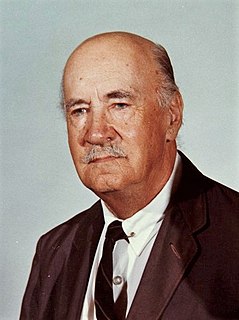
Igor Ivanovich Sikorsky was a Russian–American aviation pioneer in both helicopters and fixed-wing aircraft. His first success came with the S-2, the second aircraft of his design and construction. His fifth airplane, the S-5, won him national recognition as well as F.A.I. license number 64. His S-6-A received the highest award at the 1912 Moscow Aviation Exhibition, and in the fall of that year the aircraft won first prize for its young designer, builder and pilot in the military competition at Saint Petersburg.

The Sikorsky S-42 was a commercial flying boat designed and built by Sikorsky Aircraft to meet requirements for a long-range flying boat laid out by Pan American World Airways in 1931. The innovative design included wing flaps, variable-pitch propellers, and a tail-carrying full-length hull. The prototype first flew on 29 March 1934, and, in the period of development and test flying that followed, quickly established ten world records for payload-to-height. The "Flying Clipper" and the "Pan Am Clipper" were other names for the S-42.
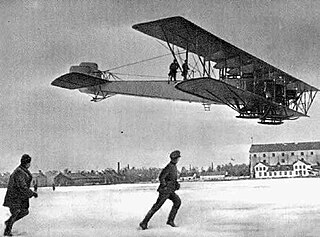
The Sikorsky Ilya Muromets were a class of Russian pre-World War I large four-engine commercial airliners and military heavy bombers used during World War I by the Russian Empire. The aircraft series was named after Ilya Muromets, a hero from Slavic mythology. The series was based on the Russky Vityaz or Le Grand, the world's first four-engined aircraft, designed by Igor Sikorsky. The Ilya Muromets aircraft as it appeared in 1913 was a revolutionary design, intended for commercial service with its spacious fuselage incorporating a passenger saloon and washroom on board. The Ilya Muromets was the world's first multi-engine aircraft in production and at least sixty were built. During World War I, it became the first four-engine bomber to equip a dedicated strategic bombing unit. This heavy bomber was unrivaled in the early stages of the war, as the Central Powers had no aircraft capable enough to rival it until much later.
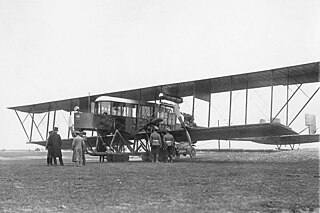
The Sikorsky Russky Vityaz, or Russian Knight (S-21), previously known as the Bolshoi Baltisky(The Great Baltic) in its first four-engined version, was the first four-engine aircraft in the world, designed by Igor Sikorsky and built at the Russian Baltic Railroad Car Works in Saint Petersburg in early 1913.
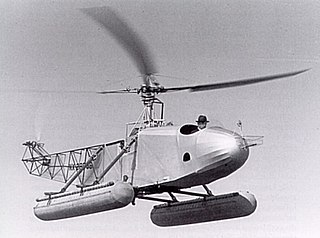
The Vought-Sikorsky VS-300 is an American single-engine helicopter designed by Igor Sikorsky. It had a single three-blade rotor originally powered by a 75 horsepower (56 kW) engine. The first "free" flight of the VS-300 was on 13 May 1940. The VS-300 was the first successful single lifting rotor helicopter in the United States and the first successful helicopter to use a single vertical-plane tail rotor configuration for antitorque. With floats attached, it became the first practical amphibious helicopter.

The Sikorsky S-10 was a Russian military twin-float seaplane that served with the Russian Navy's Baltic Fleet from the summer of 1913 to 1915. After Igor Sikorsky built the successful Sikorsky S-6 for the Russian military, he tried to build another successful aircraft for them. The S-10 was a modified S-6B built by the Russo-Baltic Carriage Factory. Approximately sixteen production versions of the S-10 were built. It had a less powerful engine and generally weaker structure than the S-6. They had either an 80 hp Gnome Monosoupape or a 100 hp Argus Motoren engine. Some were deployed on the world's first operational seaplane carriers.

The Sikorsky S-5 was an early Russian single seat biplane design by Igor Sikorsky, completed in late April 1911.
The Sikorsky S-34 was a 1920s American six-seat sesquiplane, designed and built by the Sikorsky Manufacturing Corporation. Only one was built, but the design led to the successful Sikorsky S-38.

The Sikorsky S-8Malyutka (baby) was a small Russian single engine aircraft built by the Russian Baltic Railroad Car Works shortly after Igor Sikorsky became chief engineer of the aircraft manufacturing division in 1912.

The Sikorsky S-7 was a Russian single engine experimental prototype aircraft built by the Russian Baltic Railroad Car Works shortly after Igor Sikorsky became chief engineer of the aircraft manufacturing division.

The Sikorsky S-2 was the second fixed wing aircraft designed by Igor Sikorsky using the main wing section from the S-1 and a 25 hp (19 kW) Anzani 3 three-cylinder engine in a tractor configuration. During the first flight attempt on June 3, 1910, the biplane reached a height of two to four feet and traveled approximately 200 yards. After several successful flights the S-2 was completely destroyed on June 30 when Sikorsky inadvertently stalled the underpowered aircraft at an altitude of 70 feet.

The Sikorsky S-33 Messenger was an American two-seat sesqiuplane designed and built by the Sikorsky Manufacturing Corporation in 1925.

The Sikorsky S-1 was the first fixed wing aircraft design by Igor Sikorsky. In February 1910 work began on the pusher configured biplane powered by a 15 hp (11 kW) Anzani three-cylinder, air-cooled engine. The machine was completed in April and Sikorsky began his first attempts at flight. In early May during a take-off attempt on a windy day the machine briefly became airborne due mostly to a favorable headwind. Further attempts were less successful, and Sikorsky disassembled it, saving the main wing section to construct the S-2.
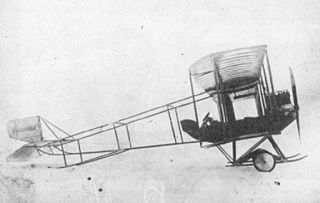
The Sikorsky S-6 was a Russian single engine experimental aircraft similar to the S-5, built in 1911 by Igor Sikorsky.

The Sikorsky S-4 was a Russian aircraft built by Igor Sikorsky using many components of the S-3 including the 40 hp (30 kW) Anzani three-cylinder engine. Construction of the biplane began in late December 1910 and was completed early in the spring of 1911. The machine appeared in a static display at an aeronautical exhibition at Kharkov in the spring of 1911, but was never flown. Some time afterward it was disassembled.

The Sikorsky S-9Kruglyj was a Russian single engine prototype aircraft completed in the spring of 1913 by the Russian Baltic Railroad Car Works while Igor Sikorsky was the chief engineer of the aircraft manufacturing division.

The Sikorsky S-11 Polukroogly was a Russian single engine prototype reconnaissance aircraft completed in July 1913 by the Russian Baltic Railroad Car Works while Igor Sikorsky was the chief engineer of the aircraft manufacturing division.

The Sikorsky S-12 was a Russian single engine trainer aircraft completed in the spring of 1913 by the Russian Baltic Railroad Car Works while Igor Sikorsky was the chief engineer of the aircraft manufacturing division.
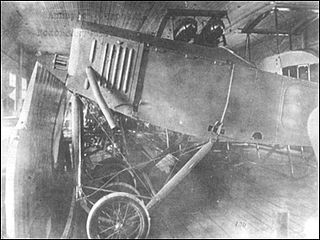
The Sikorsky S-17 was a Russian single engine aircraft built at the Russian Baltic Railroad Car Works in Petrograd while Igor Sikorsky was the chief engineer of the aircraft manufacturing division.

The Sikorsky S-18 was a Russian twin engine aircraft designed by Igor Sikorsky and built by the Russian Baltic Railroad Car Works aviation division at Petrograd during World War I.



















